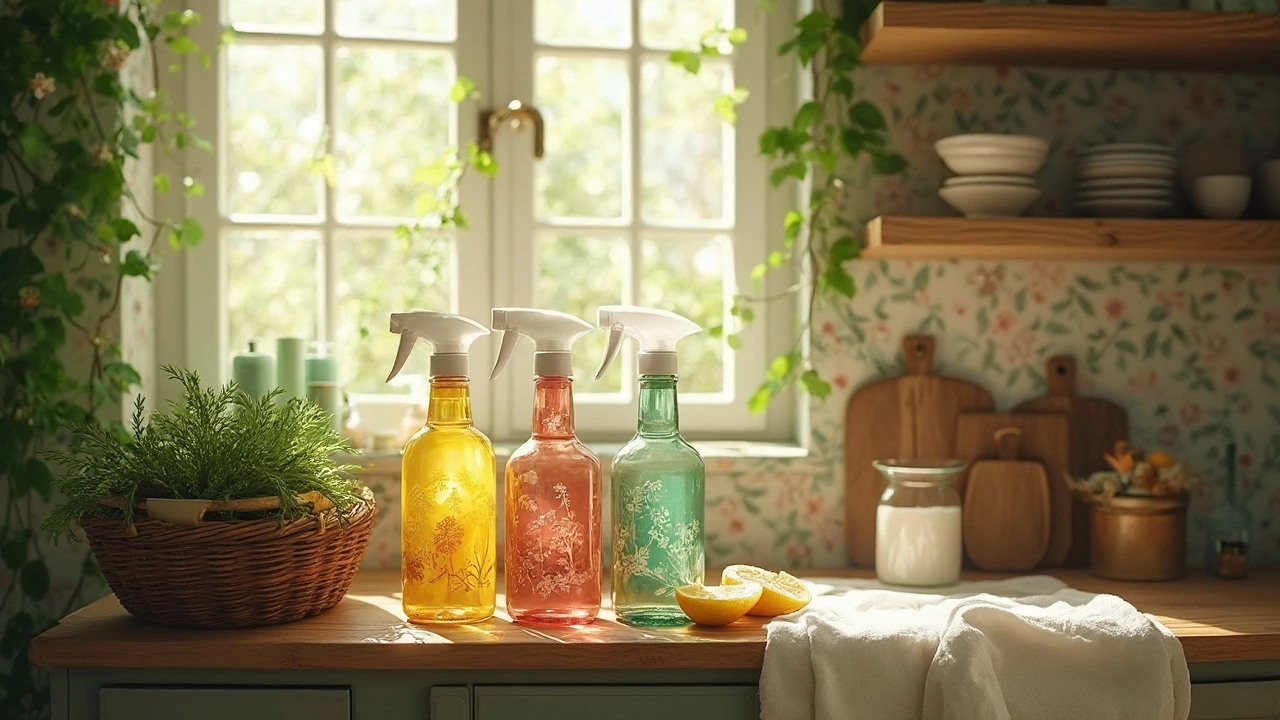Chemicals: How to Pick Safe and Effective Cleaning Products
When you reach for a spray bottle, you’re really choosing a chemical. The right one can make a mess disappear in seconds; the wrong one can leave streaks, odors, or even health risks. Below you’ll find practical tips that help you decide what to use, when to mix your own, and how to keep your home safe.
Choosing the Right Chemicals
First, check the label. Look for ingredients you recognize – water, vinegar, baking soda, citrus oils – and avoid anything that lists “fragrance” or “phosphate” as the first component. Those often hide harsh solvents that can irritate skin or damage surfaces.
Second, match the chemical to the job. Glass and mirrors love a low‑pH solution like diluted vinegar; it cuts grease without leaving a film. For baked‑on kitchen grease, a mild alkaline cleaner such as baking soda or a commercial degreaser works best. Using a glass cleaner on a stovetop will waste time and may scratch the surface.
Third, consider the environment. Green cleaners use biodegradable ingredients that break down quickly, reducing water‑way pollution. If you’re looking for a truly eco‑friendly option, choose products certified by reputable bodies (e.g., EcoLabel or Green Seal). They usually avoid chlorine, ammonia, and phosphates.
DIY vs Store‑Bought: What Works
DIY cleaners are cheap and easy to make. Mix one part white vinegar with one part water for windows, mirrors, and tiles. Add a few drops of tea‑tree oil if you want a fresh scent and extra disinfecting power. For stubborn oven grime, sprinkle baking soda on the wet surface, let it sit, then wipe with a damp cloth – the mild abrasive lifts burnt residue without harsh chemicals.
Store‑bought products shine when you need speed or a specialized formula. Professional window cleaners, for example, often add a tiny amount of surfactant to their water, which reduces surface tension and prevents streaks. If you’re hiring a cleaning service, ask them what chemicals they use. Many reputable companies now offer “green” options that still deliver professional results.
One common mistake is over‑mixing. Combining bleach with ammonia or vinegar creates toxic gases. Keep each cleaner separate and rinse surfaces thoroughly before applying another product.
Remember that safety isn’t just about the chemicals themselves. Wear gloves when handling concentrated solutions, keep the area ventilated, and store any leftover product out of children’s reach.
In short, start with the simplest solution you can. If vinegar and water get the job done, you’ve saved money and avoided unnecessary chemicals. When a tougher stain appears, reach for a purpose‑made cleaner that’s labeled safe for that surface. By matching the chemical to the task, you’ll keep your home sparkling and your family healthy.

Eco-Friendly Chemicals for a Greener Clean
Eco-friendly chemicals are revolutionizing the way we clean, offering safer and more sustainable alternatives to traditional products. These chemicals are designed to minimize environmental impact while maintaining cleaning efficiency. Understanding what makes a chemical eco-friendly can guide consumers in choosing products that align with green living values. From plant-based ingredients to biodegradable formulas, there are various options that make everyday cleaning greener. Learn about the benefits, tips, and choices to navigate your path to a more sustainable home.
Read More